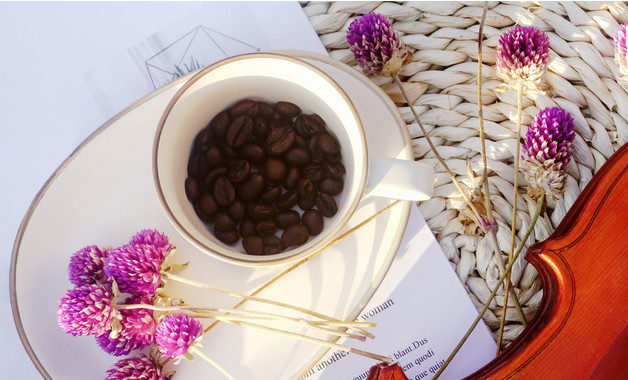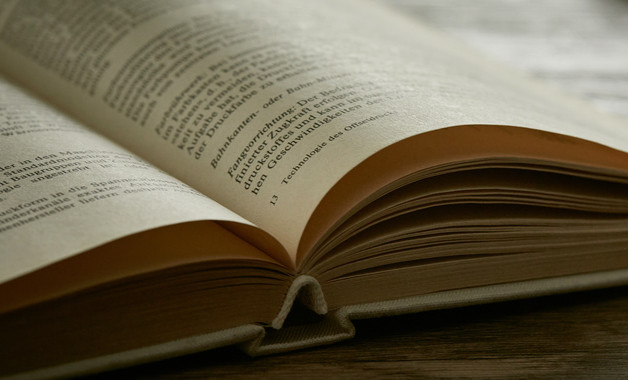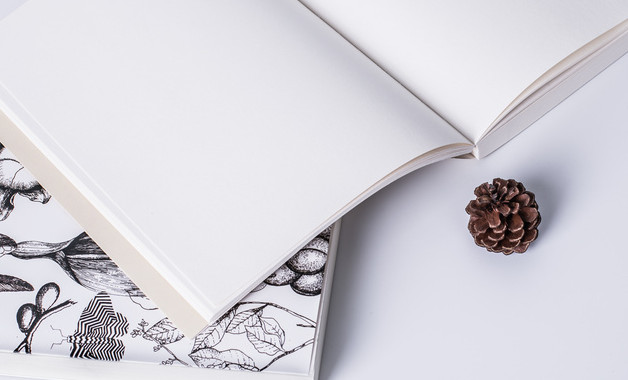
英文导游词 第1篇
阅读提示:本篇共有6712个字,预计阅读时间为17分钟,共有103位用户关注,32人点赞!
颐和园英文导游词英文版【1】
situated in the western outskirts of haidian district, the summer palace is 15 kilometers (9.3 miles) from central beijing. having the largest royal park and being well preserved, it was designated, in 1960 by the state council, as a key cultural relics protection site of china. containing examples of the ancient arts, it also has graceful landscapes and magnificent constructions. the summer palace is the archetypal chinese garden, and is ranked amongst the most noted and classical gardens of the world. in 1998, it was listed as one of the world heritage sites by unesco.
constructed in the jin dynasty (1115-1234), during the succeeding reign of feudal emperors; it was extended continuously. by the time of the qing dynasty (1644-1911), it had become a luxurious royal garden providing royal families with rest and entertainment. originally called qingyi garden (garden of clear ripples), it was know as one of the famous three hills and five gardens (longevity hill, jade spring mountain, and fragrant hill; garden of clear ripples, garden of everlasting spring, garden of perfection and brightness, garden of tranquility and brightness, and garden of tranquility and pleasure). like most of the gardens of beijing, it could not elude the rampages of the anglo-french allied force and was destroyed by fire. in 1888, empress dowager cixi embezzled navy funds to reconstruct it for her own benefit, changing its name to summer palace (yiheyuan). she spent most of her later years there, dealing with state affairs and entertaining. in 1900, it suffered again, being ransacked by the eight-power allied force. after the success of the 1911 revolution, it was opened to the public.
composed mainly of longevity hill and kunming lake, the summer palace occupies an area of 294 hectares (726.5 acres), three quarters of which is water. guided by nature, artists designed the gardens exquisitely so that visitors would see marvelous views and be amazed by perfect examples of refined craftwork using the finest materials.
centered on the tower of buddhist incense (foxiangge) the summer palace consists of over 3,000 structures including pavilions, towers, bridges, and corridors. the summer palace can be divided into four parts: the court area, front-hill area, front-lake area, and rear-hill and back-lake area.
front-hill area: this area is the most magnificent area in the summer palace with the most constructions. its layout is quite distinctive because of the central axis from the yard of kunming lake to the hilltop, on which important buildings are positioned including gate of dispelling clouds, hall of dispelling clouds, hall of moral glory, tower of buddhist incense, the hall of the sea of wisdom, etc.
rear-hill and back-lake area: although the constructions are fewer here, it has a unique landscape, with dense green trees, and winding paths. visitors can feel a rare tranquility, and elegance. this area includes scenic spots such as garden of harmonious interest and suzhou market street.
court area: this is where empress dowager cixi and emperor guangxu met officials, conducted state affairs and rested. entering the east palace gate, visitors may see the main palace buildings: the hall of benevolence and longevity served as the office of the emperor, the hall of jade ripples where guangxu lived, the hall of joyful longevity, cixis residence, the hall of virtue and harmony where cixi was entertained.
front lake area: covering a larger part of the summer palace, opens up the vista of the lake. a breeze fluttering, waves gleam and willows kiss the ripples of the vast water. in this comfortable area there are the eastern and western banks, the seventeen-arch bridge, nanhu island, and so on. on the western bank float six distinct bridges amongst which the jade-belt bridge is the most beautiful.
颐和园英文导游词英文版【2】
good morning ladies and gentlemen:
my name is xx. im very honored to be youre guide. i do hope all of you could like my guiding and enjoy everything on your pleasant day. this morning we are going to visit the summer palace. the summer palace is located on the northwest suburbs of beijing, about 20 kilometers away from the center of the city. so it will take us about 1 hour to get there. before we arrived at the summer palace, i would like to introduce you a brief introduction of the woderful imperial garden. the summer palace is the most beautiful and the largest imperial garden existing in chinan, and it is the best-preserved imperial garden in the world. in 1998, it was placed on the list of world cultural heritage by the unesco.
the summer palace was first built as an imperial garden at the beginning of 12th century in the jin dynasty. the construction continued to the yuan and ming dynasties. in the qing dynasty, the building of imperial gardens reached its culmination. during emperor qianlongs reign, the famous three hills and five gardens were built on the northwest suburbs of beijing. the summer palace was a part of it and at that time was called the garden of clear ripples. in 1860, the anglo-french allied forces invaded beijing. the three hills and five gardens were burnt down to ashes.
in 1888, the empress dowager cixi spent the navy fund having the garden of clear ripples rebuilt. and then she renamed it the garden of nurtured harmony (summer palace).
in 1900, the allied forces of eight powers invaded beijing. the summer palace was once again severely damaged. it was rebuilt again in 1902.
in 1924, the last emperor puyi was driven out of the palace, after that, the summer palace was turned into a public park.
ladies and gentlemen, please look over there, in front of us is an archway. it is called emptiness and the collection of excellence, and it is the first scenery of the summer palace. the two chinese words on the front side of the archway mean emptiness and refer to everything in nature and in the scenery. the two words on the back side mean collection of excellence and refer to the tranquility of the beautiful scenery just within the garden.
(outside the east palace gate)
now, we have arrived at the east palace gate. its the main entrance of the summer palace. on top of the gate there is a plaque with three chinese characters the summer palace in emperor guangxus handwriting. the gate that we are now entering was used by the emperor, the empress only in the old days.
(inside the east palace gate)
now we are inside the summer palace. in front of us is the second gate of the summer palace the gate of benevolence and longevity. the annex halls on both sides were used for officials on duty and the offices of the privy council. well, before we start our tour in the garden, i will briefly introduce you the layout of the summer palace and our tour route. o.k., ladies and gentlemen, may i have your attention please? lets look at the map together, from it we can see the summer palace covers an area of 290 hectares, which the lake occupies the three-fourths. the whole garden can be divide into three parts: the area was for political activities, resting places of the emperor and empress, and sightseeing areas. our tour will start from the area of the political activities, and end off the marble boat. on the way, we will visit the main constructions of the summer palace, such as the hall of jade ripples, the hall of happiness and longevity, the long corridor, the hall of dispelling clouds and so on. it will take us about two hours to visit the summer palace. please attention, we wont walk back and our driver will pick us up at the north gate. should you get lost or separated from the group, please meet us at the north gate.
ok, everyone, lets start our tour from the emperors office --- the hall of benevolence and longevity. follow me please.
(inside the courtyard of the benevolence and longevity)
passing through the gate of benevolence and longevity, we have already entered the courtyard of the hall of benevolence and longevity. the huge rock in front of us is taihu rock. it was quarried from taihu lake in jiangsu province, so it was known as taihu rock. please look around the courtyard and you can see there are four grotesque shaped rocks placed in each corner of this courtyard, representing the four seasons of the year. the taihu rocks are usually used as decoration for beautifying gardens and they are thin, crease, leak and penetration in characters.
the bronze mythical animal behind the taihu rock is known as suanni or some people call it qilin. according to ancient chinese mythology, the dragon had nine sons, but none of them became a real dragon. suanni was one of the nine sons of the dragon. it was an auspicious animal that could avoid evil spirits in ancient lengeds. suanni has the head of dragon, the antlers of dear, the hooves of ox and the tail of lion.
(in front of the hall of benevolence and longevity)
this grand hall is the hall of benevolence and longevity. it was first built in 1750. the name of this hall taken from a book entitled lun yu by confucius doctrine means, those who are benevolent can enjoy a long life. this hall was the place where emperor guangxu and empress dowager cixi held audience and handled state affairs when they were in the summer palace. for protecting the historical cultural relic, we couldnt enter the hall. so i would like to briefly introduce you the decorations in the hall of benevolence and longevity. the arrangement of the hall has been left untouched. in the middle of the hall stands an emperors throne carved with nine dragons on design. there are two big fans on both sides behind the throne which are made of peacock feathers. behind the throne there is a big screen with red sandalwood frame and glass mirror inlaid. on the mirror there are 226 chinese characters of the word longevity written in different styles. there are two scrolls on each side of the wall with a big chinese character longevity written on it. it was said that the word longevity written by empress dowager cixi. there are 100 bats painted at the background of the scroll symbolizing happiness.
well, please look up the two pairs of incense burners in the shape of a dragon and a phoenix in front of the hall. they were used to burn incense sticks to create the appropriate atmosphere. in the old days, the dragon and phoenix were the symbol of the emperor and empress. according to ritual, the dragons should be placed in the center while phoenixes were to either side in front of the hall.however, here, the dragons are off to the sides and the phoenixes are in the middle. this was a product of the end of qing dynasty when empress dowager cixi handled state affairs behind the screen.
(at the entrance of garden of virtuour harmony)
we are now visiting the garden of virtuous harmony, where emperor qianlong and empress dowager cixi were entertained with bejing opera performances. it mainly consists of the dressing house, the grand theater building and the hall of pleasure smile. the grand theater building was known as the cradle of beijing opera was uniquely laid out and magnificently decorated. there are 7 exhibition halls with articles of daily use on display here.
(in front of the grand theater building)
this is the grand theater building. of the three main theater buildings of the qing dynasty, the grand theater building is the tallest and largest one. the other two are changyin pavilion in the forbidden city and qingyin pavilion in the mountain resort in chengde. the grand theater building, a three-storied structure, has a double roof with upturned eaves. it is 21 meters high and 17 meters wide. performances could be staged simultaneously on three levels. the top one was a symbol of happiness, the middle level was emolument level and the bottom stage was named longevity stage. each level has the entrance and the exit. there are some trapdoors in the ceiling and below the floor for celestial being to fly down from the sky and the devils to appear from the earth to set off a certain atmosphere on the stage. there is also a well and five ponds built under the stage for a good effect of water scenes. the stage is open to three sides.
well, please look at the construction that stands right opposite the grand theater building, its the hall of pleasure smile. the empress dowager cixi used bo sit inside the hall to watch and enjoy the peking opera.
(a lakeside walk from the garden of virtuous harmony to the hall of jade ripples)
we are now standing in the middle of a rockery behind the hall of benevolence and longevity. it appears that theres nothing special ahead. however, after we clear the rockery, we will reach kunming lake. this is an application of a specific style of chinese
gardening.
now, we are walking along the bank of the kunming lake. look over there, not far away in the lake there is an islet. its called the spring heralding islet. the pavilion on the islet is called the spring heralding pavilion. a number of willow trees and peach trees were planted on this islet. in early spring, when the ice begins to melt, peach trees are red in pink blossoms, willow trees turn a tender green signaling that the early spring has returned. hence the name heralding sping pavilion.
(in front of the hall of jade ripples)
this group of special and quiet courtyard dwellings is the hall of jade ripples. the words jade ripples came from a verse gentle ripples gushing out of jade spring, which refers to the rippling water in the lake. it was first used by emperor qianlong to attend to state affairs. in the late qing dynasty, it was where emperor guangxu was put under house arrest.
this hall is a hallmark of the movement of 1898. emperor guangxu was emperor dowager cixis nephew. after emperor tongzhi died, emperor dowager cixi made her nephew, who was at that time four years old a successor in order to continue her hold on imperial power. she handled state affairs behind the screen. after emperor guangxu managed state affairs personally at the age of 19, a political conflict occurred between the conservatives and the reformers. in 1898, the reform movement took place with the aim of sustaining the core principles of the qing dynasty while reforming outdated laws. the movement lasted for103 days until it was suppressed by empress dowager cixi. it was called the hundred-day reform. after the reform failed, emperor guangxu was put under house arrest here. for the strict control of him, empress dowager cixi ordered to build many brick walls in the front, back, and on the right and left of the hall of jade ripples. at that time the hall was entirely sealed up, just like a prison. today only the hidden walls in the east and west annex room still maintain its original appearance. it is open to visitors as the relic related to the 1898 reform movement.
(in front of the chamber of collecting books)
this is the chamber of collecting books. in chinese, its called yi yun guang. yun was a kind of fragrant weed. in ancient times, it was usually used as termite repellent in rooms where books were stored.in the emperor qianlongs reign, the purpose of the hall was for collecting books. later it was converted into a residence. there used to be the residence of guangxus empress longyu, and his favorite concubine zhenfei.
(in the hall of happiness and longevity)
this group of courtyard is the hall of happiness and longevity. it was the major architectural structure in the living quarters and the residence of empress dowager cixi. the whole compound was basically made of wood, which is ideal for ventilation and lighting. with its quiet and tasteful layout, the hall of happiness and longevity made life very easy and convenient. in front of the hall of happiness and longevity there is a huge rock placed in the middle of this courtyard named qing zhi xiu and nicknamed as family bankruptcy rock. this huge rock was discovered in fangshan district by a ming official mi wanzhong. he wanted to transport it to his own garden shaoyuan. in the old days, transporting such rock was very difficult. after spending all his money to ship it, he still could not succeed in doing this. the big rock was then left on the roadside somewhere near liangxiang county, 30 kilometers southwest of beijing. hence it was nicknamed family bancruptcy rock. later emperor qianlong discovered it and transported to the garden of clear ripples and laid in front of the hall of happiness and longevity. the colorful glass chandeliers hanging inside the hall was introduced from germany in 1903. it is one of the earliest electric lights in china.
(in front of the gate of inviting the moon of the long corridor)
ladies and gentlemen, you may have visited some of the best museums in the world, such as the louvre in france and the museum of great britain. now i will show you a special gallery in the palacethe long corridor. in 1990, the long corridor was listed in the guinness book of world records as the longest painted corridor in the world. it would be a pity if we leave the summer palace without visiting the long corridor and the marble boat. now, here we go, the long corridor first!
(strolling along the long corridor)
the long corridor starts from the gate inviting the moon to the shizhang gate. it is 728 meters long and consists of 273 sections. the long corridor is one of the major structures of the summer palace. since the corridor was designed to follow the physical features of the southern slope of longevity hill, four multiple-eaved, octagonal pavilions ( retaining the goodness pavilion, living with the ripples pavilion, autumn water pavilion, clear and far pavilion) were placed at bends and undulation, they represent four seaons of a year. thus visitors will hardly notice the rise and fall of the terrain. as a major part of the architectural style of the summer palace, the long corridor serves as an ingenious connector between the lake and the hill. scattered buildings on the southern slope were linked to create a unified complex.
the long corridor is the longest covered veranda in any chinese garden. on the purlins and beams of the covered veranda, there are over 14,000 suzhou style paintings. among them, there are 546 color paintings relating to the scenes of west lake in hangzhou, zhejiang province. beside the colorful paintings of natural scenery, there are also scenes of flowers, birds, fish, insects, mythology and figures. the paintings of figures are mainly adapted from ancient chinese classical literature, such as pilgrimage to the west, the romance of the three kingdoms, the western chamber, water margin, and the dream of the red mansion.
(in front of the gate of dispelling clouds)
now we are approaching the central part of the structures on the lakeside slope, the tower of buddhist incense within the hall of dispelling clouds. the central axis line starts from the wharf next to the lake to the sea of wisdom on top of the hill. the main architectural structures here are the gate of dispelling clouds, hall of dispelling clouds, tower of buddhist incense and the sea of wisdom, which altogether form a splendid three-dimensional landscape. the layout of this group of architectures was based on scenes described in buddhist sutras. this group of structures are among the most magnificently constructed here in the summer palace. this is a good place to taking photos, we will stay here for about 15 minutes.
now we are walking continuely along the long corridor, the next scene we are going to visit is marble boat.
look over there! halfway up the slope there stands the hall of listening to orioles. it was the place for emperor and empress to enjoy opera and court music. it is said the singing of orioles is very pleasing. before the garden of virtuous harmony was built, empress dowager cixi enjoyed opera and music here. now the hall is one of the most famous restaurants in china, featuring imperial dishes and desserts.
英文导游词 第2篇
阅读提示:本篇共计433个字,预计看完需要2分钟,共有140位用户关注,47人点赞!
1) the minister of rites would receive the edict in taihedian (hall of supreme harmony), where the emperor was holding his court. the minister would then carry the decree on a yunpan (tray of cloud), and withdraw from the hall via taihemen (gate of supreme harmony)
2) the minister would put the tray in a miniature longting (dragon pavilion). beneath a yellow umbrella and carry it via wumen (meridian gate), to tian'anmen gate tower. 3) a courtier would be invested to proclaim the edict. the civil and military officials lining both sides of the gateway beneath the tower would prostrate themselves in the direction of the emperor in waiting for the decree to the proclaimed.
4) the courtier would then put the edict in a phoenix-shaped wooden box and lower it from the tower by means of a silk cord. the document would finally be carried in a similar tray of cloud under a yellow umbrella to the ministry of rites.
5) the edict, copied on yellow paper, would be made known to the whole country. such a process was historically recorded as imperial edict issued by golden phoenix. during the ming and qing dynasties tian'anmen was the most important passage. it was this gate that the emperor and his retinue would go through on their way to the altars for ritual and religious activities.
英文导游词 第3篇
阅读提示:本篇共计1334个字,预计看完需要4分钟,共有282位用户关注,40人点赞!
故宫导游词一
lying at the center of beijing, the forbidden city, called gu gong, in chinese, was the imperial palace during the ming and qing dynasties. now known as the palace museum, it is to the north of tiananmen square. rectangular in shape, it is the world‘s largest palace complex and covers 74 hectares. surrounded by a six meter deep moat and a ten meter high wall are 9,999 buildings. the wall has a gate on each side. opposite the tiananmen gate, to the north is the gate of devine might (shenwumen), which faces jingshan park. the distance between these two gates is 960 meters, while the distance between the gates in the east and west walls is 750 meters. there are unique and delicately structured towers on each of the four corners of the curtain wall. these afford views over both the palace and the city outside. the forbidden city is divided into two parts. the southern section, or the outer court was where the emperor exercised his supreme power over the nation. the northern section, or the inner court was where he lived with his royal family. until 1924 when the last emperor of china was driven from the inner court, fourteen emperors of the ming dynasty and ten emperors of the qing dynasty had reigned here. having been the imperial palace for some five centuries, it houses numerous rare treasures and curiosities. listed by unesco as a world cultural heritage site in 1987, the palace museum is now one of the most popular tourist attractions world wide.
construction of the palace complex began in 1407, the 5th year of the yongle reign of the third emperor of the ming dynasty. it was completed fourteen years later in 1420. it was said that a million workers including one hundred thousand artisans were driven into the long-term hard labor. stone needed was quarried from fangshan, a suburb of beijing. it was said a well was dug every fifty meters along the road in order to pour water onto the road in winter to slide huge stones on ice into the city. huge amounts of timber and other materials were freighted from faraway provinces. ancient chinese people displayed their very considerable skills in building the forbidden city. take the grand red city wall for example. it has an 8.6 meters wide base reducing to 6.66 meters wide at the top. the angular shape of the wall totally frustrates attempts to climb it. the bricks were made from white lime and glutinous rice while the cement is made from glutinous rice and egg whites. these incredible materials make the wall extraordinarily strong.
since yellow is the symbol of the royal family, it is the dominant color in the forbidden city. roofs are built with yellow glazed tiles; decorations in the palace are painted yellow; even the bricks on the ground are made yellow by a special process. however, there is one exception. wenyuange, the royal library, has a black roof. the reason is that it was believed black represented water then and could extinguish fire.
nowadays, the forbidden city, or the palace museum is open to tourists from home and abroad. splendid painted decoration on these royal architectural wonders, the grand and deluxe halls, with their surprisingly magnificent treasures will certainly satisfy "modern civilians".
故宫导游词二
ladies and gentlemen:
i am pleased to serve as your guide today.
this is the palace museum; also know as the purple forbidden city. it is the largest and most well reserved imperial residence in china today. under ming emperor yongle, construction began in 1406. it took 14years to build the forbidden city. the first ruler who actually lived here was ming emperor zhudi. for five centuries thereafter, it continued to be the residence of23 successive emperors until 1911 when qing emperor puyi was forced to abdicate the throne. in 1987, the united nations educational, scientific and cultural organization recognized the forbidden city was a world cultural legacy.
英文导游词 第4篇
阅读提示:本篇共计3007个字,预计看完需要8分钟,共有245位用户关注,60人点赞!
丽江古城中英文导游词范文1:云南丽江,一个历史悠久,风景如画的小城,丽江古城的所在地。
我们乘车从机场来到了丽江新城,在一个旅馆里住下了,那天,我们没有去古城,只是站在窗边远远地眺望着那一幢幢的小房子。它们在夜幕下显得那么安静,不发出一丁点的声音;它们又是那么古朴,依稀看得见历史的足迹;它们还那么迷人,白墙黑瓦的古老小屋,远远望去,在高楼大厦之间显得那么得低矮,从窗户的玻璃后透出了油灯若明若暗的亮光,没过多少时间,灯渐渐熄了。
第二天,当东方露出了鱼肚白,晨曦的微光照耀着还没被唤醒的丽江古城,被稀薄的淡雾笼罩着的一切还是那么得宁静,只是偶尔有几阵微风吹得青草“哗哗”响,吹得小溪“丁冬”地流,吹得树叶“唰唰”地摇。一会儿工夫,太阳蹿上了高高的山头,古城也热闹起来了,家家户户都打开了“吱吱嘎嘎”响的木门,游客们也涌进了迷宫似的丽江古城。我也随着人群,随着一条潺潺流动的小溪,进入了古城。
第一次进入秀丽的的古城中,第一次亲密接触这古老的地方,我感到既新奇又兴奋,也特别仔细地看了这儿的景色。在宽阔的大街上,铺着光滑的石板,经过了历史的风霜雨雪,经过了许多人的踩踏,石头的棱角已经变得十分得光滑,踩在上面一不小心就要摔倒了。在石板路旁,有一条清澈的小溪流,流遍了整个古城,也是走出这个大“迷宫”的重要路标。再说这一幢幢低矮而朴素的小房子,斑驳的墙上有各种各样的印子,有深浅不一的磕痕,有交叉着的鞋印,也有方向不一的许多划痕。屋顶上铺着破旧的黑色瓦片,一下子就看得出那是很久以前的东西了。一切都散发着一股浓郁的历史的香气。
lijiang, yunnan, a long history, a picturesque town, the seat of the old town of lijiang.
we went to lijiang city bus from the airport, stay in a hotel, that day, we didn't go to the ancient city, only stood at the window looking out over the towering at a small house. they are under the night is so quiet, not the slightest sound. they are so simple, vaguely see the footprint of the history; they are so charming, white wall heiwa ancient house, from a distance, between the high-rise buildings seem so low, almost imperceptible fineness from the glass of the window after give the lamp light, not too much time, gradually the light went out.
the next day, when the east out of, the sky was a fish-belly grey on has not been the half-light of the morning wake up the old town of lijiang, all covered with thin thin fog still so quiet, only occasionally a few array breeze blown grass "abundance" ring, "ding ding" blown stream flow, blowing leaves "shua shua" shake. in a few minutes, the sun shot on the high mountain, the ancient city is lively, every family opened the "noise" of wooden door, the tourists also poured into the maze of lijiang. i also, along with the crowd as a flowing brook, entered the city.
for the first time into the beautiful ancient city, the first intimate contact this old place, i felt the excitement of novelty, special also carefully watch the scenery here. in the broad streets, with smooth slate, after a history of weathered rain and snow, after many people trample, stone has become ten piece of smooth edges and corners, trample on it will fall down carelessly. in the stone road, a small stream, with a clear stream all over the ancient city, is also out of this big "maze" an important signpost. besides this a low and simple little house, mottled walls there are a variety of impressions, a two-tone ke marks, have crossed shoes print, also have different direction of many scratches. covering the roof was shabby black tiles, suddenly see something that was a long time ago. everything is sending out a full-bodied aroma of history.
丽江古城中英文导游词范文2:大家好!我是青旅社的邹其芳,大家可以叫我小芳,但不是村里的那个小芳。欢迎各位来到号称世界遗产的“丽江古城”。
亲爱的游客们,我们已经到了美丽的古城了,在古城前面,大家会看见两架大风车在水里欢快地转动,里面的水珠也会测出来,所以,请大家小心。这两架风车代表着古城的标志。下面,我来介绍一下丽江古城:丽江古城海拔2400米,是丽江纳西民族自治县的中心城市,古城形成于南宋后期,已有八百多年的历史,面积3.8平方公里,常住人口约3万人,1997年被列入为世界文化遗产。
古城的中心是四方街,地面上是五彩石铺成的,踏上去就会发出清脆的响声,四方街上没有哪两座客栈里央的设计是一样的,大家也可以进去参观一下。说了那么多,我还是带大家去一条小溪吧,大家看!这条小溪就是放河灯。放河灯是一条种古老的习俗,据说每天晚上龙王会来巡游古城,放一盏河灯吧!不过,请大家不要乱扔垃圾。
游客们,丽江古城到处都有让人流连忘返的美景,说也说不尽,希望大家下次再来。
everybody is good! i am a youth hostel robert zou, you can call me small fang, but not the small fang in the village. welcome to the world heritage of "lijiang ancient city".
dear visitors, we have been in the beautiful ancient city, in front of the ancient city, you will see two large wind turbines turn happily in the water, the water inside will be measured, so please be careful. the windmill represents the symbol of the ancient city of. here, let me introduce the lijiang ancient city, lijiang ancient city, 2400 meters above sea level, is the center of the lijiang naxi autonomous county, city, city formed in the late southern song dynasty, has a history of eight hundred years, the area of 3. 8 square kilometers, has about 30000 inhabitants, was listed as a world heritage site in 1997.
is the center of the city square street, the ground is paved with multicolored, step will be clicked, no two sifang street inn central design is the same, you can also visit. said so much, i still take you to a creek, everyone to see! this stream is put river lanterns. put river lamp is a kind of old custom, it is said that every night dragon king to tour city, put a river light! however, please do not litter.
the tourists, lijiang ancient city is filled with the beauty of the people linger, said also said not, i hope you come again next time.
丽江古城中英文导游词范文3:大家好!我是你们游览丽江古城的导游。我很高兴能与大家共渡这快乐时光!我姓张。大家可以叫我张导游。
请大家跟我来。这里是丽江古城。我先给大家简单介绍一下丽江古城。丽江古城又名大研镇,坐落在丽江坝中部,称为“保存最为完好的四大古城”之一。它是中国历史文化名城中唯一没有城墙的古城。丽江古城地处云贵高原,海拔2400余米,全城面积达3.8平方公里,自古就是远近闻名的集市和重镇。古城现有居民6200多户,25000余人。其中,纳西民族占总人口绝大多数,有30%的居民仍在从事以铜银器制作、皮毛皮革、纺织、酿造业为主的传统手工业和商业活动。
好了,现在大家跟我进古城看看。
丽江古城是一座没有城墙的古城,大研古城是一座具有浓烈人文气息的小城。
丽江古城内的街道依山傍水修建,铺的大多都是红色角砾岩,雨季不会泥泞、旱季也不会飞灰,石上花纹图案自然雅致。看,光滑洁净的青石板路、完全手工建造的土木结构的房屋、无处不在的小桥流水。
everybody is good! i am your tour of lijiang tour guide. i am very glad to be with you the happy time together! my name is zhang. you can call me a guide.
please come with me. here is the old town of lijiang. i'll give you a brief introduction of lijiang. lijiang also known as dayan town, is located in the middle of lijiang dam, known as "one of the most preserved ancient city of the big four". it is the only ancient city without walls in china's famous historical and cultural city. lijiang ancient city is located in the yunnan-guizhou plateau, 2400 meters above sea level, the area of the city 3. 8 square kilometers, the ancient times is known fairs and towns. the ancient city of existing residents 6200 households, 25000 people. among them, the naxi nationality for the vast majority of the population, 30% of the residents are still engaged in produced with copper, silver, fur, leather, textiles, brewing traditional handicraft industry and business activities.
ok, now you give me into the city to see.
英文导游词 第5篇
阅读提示:本篇共计3767个字,预计看完需要10分钟,共有112位用户关注,45人点赞!
“跨文化交际是指不同文化背景的人们(信息发出者和信息接受者)之间的交际;从心理学的角度讲,信息的编、译码是由来自不同文化背景的人所进行的交际就是跨文化交际”。翻译已不再仅仅被看作是语言符号的转换,而是一种文化转化的模式。随着旅游业国际化进程的不断深入,跨文化交流日趋频繁,文化冲突的可能性越来越大。因此,跨文化交际不仅对所有的译者都非常重要,对导游词的英译尤为重要。换种角度说,景点导游词(以下简称导游词)的汉译英,即一种典型的跨文化翻译。丽江以其美丽的景色,独特的文化资源吸引着全世界的人们前来旅游观光。但丽江目前旅游文本英译现状却令人堪忧。因此,对导游词英译的跨文化问题进行研究不仅具有理论意义,更有现实意义。
一、导游词翻译的含义
“导游词是导游人员在途中或景点等地向游客提供口头讲解服务所使用的,其主要功能是使游客更好地了解旅游地的自然风光和民俗风情。”“导游词的创作和实地的口语导游的讲解既是独立分离的两个阶段,又是相互联系的统一体,这一过程可以图示如下:导游词(书面语)――导游――导游词(口语)――游客。”导游词的翻译既可以是口译,也可以是笔译。这是由导游词这种文本类型所决定的。
二、跨文化交际的主要障碍
跨文化导游词翻译经常会发生故障。这不仅涉及老生常谈的拼写、语法、词汇、滥用拼音等,而且涉及语用失误和文化信息处理等方面的问题。
(一)景点名称英译不统一
旅游景点名的翻译主要包括意译、直译、音译、意译加音译、直译加音译及意译加直译等几种。然而,何时采用什么译法就需要译者考虑跨文化因素。奈达曾说:“如果译者不向假想读者调整信息负荷,接受者就可能失去信息中的一些关键因素,或觉得译文太难懂而停止阅读。”丽江景点名称英译存在一景多名的不统一。参看了丽江景点图册、旅游图书及景点公示牌简介,同一个景点名有各种版本译名。“玉龙雪山”有yulong snow-capped mountain、yulong snow mountain和jade dragon snow mountain等几种译法,甚至在同一份旅游资料中,前后使用不同的表达;“白沙壁画”有的译为baisha frescoes,也有baisha mural;“五凤楼”有的译为five-phoenix hall,有的译为five-phoenix pavilion等。笔者跟随几个外团收集资料,其间发现不同外导游对景点名的口译也是五花八门。如此,容易使外国游客产生怀疑,翻译显得太随意。
(二)中英导游词表达习惯不一致
汉语属于意合语言,英语为形合语言,这种差异造成汉语导游词句型华丽、注重文采;而英语则注重表达的信息性,属实性。英国翻译理论家彼得・纽马克将文本分为三大类:表达型文本、信息型文本和召唤型文本。导游词具有旅游文本召唤、宣称的特点,目的在于激发游客游览的兴趣,增强他们对异国文化的了解。例如,玉龙雪山银装素裹,十三座雪峰连绵不绝,宛若一条“巨龙”腾越飞舞,故称为“玉龙”。此段落中文导游词文辞华丽,诗意盎然,以达到诗情画意的审美效果。而参看景区导游图英文介绍为:yulong snow mountain is always covered with snow and an extensive chain of 13 snow peaks looks like a flying dragon,so called“jade dragon”.体现了英语注重的信息和事实性的特征。
(三)民族特色文化词的不可译性
语言既是文化载体,又是文化的一个重要组成部分。由于中、西方不同的历史条件、地域环境、社会习俗、和价值观念,致使汉、英两种语言出现了一些不对应现象,主要表现在语义上无对应和词汇空缺。文化层面的不可译性,显然是我们交际的最大障碍。不可译的结果往往使译作令人不知所云或不忍卒读,译作的可读性便成了紧要的问题。跨文化语境下的可读性问题。纽马克指出:在翻译评论者的眼里,一般读者所能接受的译作,如果准确度打了折扣,则是不可接受的。不可译但强行译之,语义或形式出现重大亏损,那么就会带来交际障碍,不可译的结果只能等于没有译,或几乎没有译。由于译入语不可避免地存在语言和文化的空白,定会产生不可译的问题,主要表现在比喻、意象、修辞、双关语等方面。
对于不可译词,目前主要倾向于两种解决办法:一是按照字面直译,二是彻底删除不译。前者会因语义不明而导致译犹未译,后者看上去则有些不负责任。两种方法都不太可取。例如,玉龙雪山在纳西语中被称为“欧鲁”译为“olu”,后加释译:silver rock;“吾鲁游翠阁”译为“wu-lu-you-cui-ge”,后加释译:the land of dying for love。它们是丽江地域中历史文化的沉淀,是汉语中独有的词汇,蕴含着深刻而独特的历史文化内容,而在英语中却找不到与之相对应的词汇。如果只采用简单的音译,不免丢失其深层的文化信息。
(四)民族中心主义与导游词英译
民族中心主义就是按照本族文化的观念和标准去解释和评价另一种文化现象、事物和他人的行为。民族中心主义阻断了文化间的有效互动与交流,导致文化上的自大和偏见,制约了人们理解其他文化的能力。若将导游词翻译过分带入民族主义的思想,而不考虑译文读者的接受心理及能力,偏离异化策略的标准。例如,如果将“三坊一照壁,四合五天井”简单的译为three zhaobi square,four five yard,那么,这样的译文只能自己津津乐道,达不到传播民族文化的目的,造成交际的障碍。合理的译文应该为:three houses and one screen wall,or as four houses and five courtyards.又如,将“木府”译为:mu’s mansion(the mansion of the magistrate mu),而非简单的mu’s house,达到了交际效果。
(五)古诗词及文言文的跨文化翻译
中国文化源远流长、一脉相承。大多数旅游景点都留有古代名人优美的诗词歌赋佳作,增加了景点的文化内涵,更体现了汉语文化的优势与博大精深。古诗词及文言文具有文笔优美,文化性、抒情性强的特点。根据现代翻译学理论,导游词文本具有“表情文本”(expressive text)的特色及功能。例如,丽江古城形成“家家溪水绕户转,户户垂杨赛江南”的独特风貌,被誉为“高原姑苏”。译文:the town is uniquely characterized as“rivers winding through every house and willows weeping before every family”,being called“gaoyuan gusu”.导游词中出现古代诗词歌赋和四字成语是越来越多,整齐、优美、押韵的诗词更能体现文化的精深和景点的秀美。若置中国古诗词于不顾,可谓典型地缺乏跨文化意识,缺乏译者责任感;反之,蹩脚译文又会让人哭笑不得。当年徐霞客曾赞叹木府“宫宝之丽,拟于王者”,吴的译文为“the magnificence of the mansion can be compared to that of a prince’s residence”,译文将原文的风格与韵律原汁原味传达出来,这不是件易事。
(六)文化信息处理
导游词属“信息文本”(informative text)。翻译时“要重达,便是漏译一两句也无关宏旨。”另一方面,根据从受话人着眼(hearer-oriented)的halliday的信息理论,信息单位分为已知信息(given information,即说话人认为受话人已知的、也应是受话人确实应了解的)和新信息(new information),根据导游翻译应是“文化的使者”,以传播中国文化为己任的原则,而了解中国文化也正是来华旅游者的重要目的或主要目的,译者在处理导游词时应以旅游者为导向(tourist-oriented),尽量保存中国文化等信息。但在实际操作中,往往与上述原则不一致。例如,“黑龙潭”“玉龙雪上”中“,龙”一词均译为dragon,中国文化中“龙”是民族传说中的神物,是中华民族的图腾和心中的圣物,然而在英语文化中dragon是一种恐怖的怪兽,被寓意为“怪物、魔鬼、凶残”,是“罪恶”的象征。此时一定要介绍一下传统文化的来由及历史、神话传说或典故,避免引起外国游客的理解错误。
三、导游词英译中消除跨文化障碍的主要措施
跨文化交际包括语言交际和非语言交际。语言像一面镜子,反映着民族的全部文化,又像一个窗口揭示着该文化的一切内容。每个民族都有自己的文化。这种文化是在特定自然环境、历史条件、地理位置和社会现实中形成的,因此具有特殊性。要想达到两种文化的沟通和理解,就必须理解本民族文化与其他民族文化的差异。
(一)具备跨文化意识,减少语用失误
所谓文化意识,指的是对文化多元性的意识和对差异的宽容态度、对异文化成员的共情能力,以及对自身文化价值观念及行为方式的觉察和反省。导游词翻译是传播文化的重要渠道,世界各国之间的文化传统、民俗风情各不相同,旅游者的价值观念、思维方式各不相同,跨文化性是导游词翻译的显著特点。导游词译者除了具备随机应变的能力,特别要求译者在翻译的过程中要以跨文化意识为指导,为游客传递准确的文化信息,尽量减少因文化差异而引起的语用失误和误解。因此,跨文化意识、跨文化思维及跨文化知识是导游词译者的必备素质,跨文化意识的自觉培养有助于减少乃至消除交际中的语用失误,从而促使跨文化交际的成功实现。
(二)深刻理解文化差异
对于本土人,纳西文化几乎耳熟能详,因而在导游词的原文中无须作详细的描写和诠释。然而,对于外国游客,却是前所未闻的文化知识。文化差异形成了固有的审美情趣和欣赏习惯,从而制约着他们对语言的直觉和对语言的表达方式。首先,译文在译入语语境中附有“意义”;另外,译者应选用注释和增补甚至改写的翻译方法,填补由于跨文化差异所导致的文化空缺。
(三)掌握沟通的方法和技巧
不同文化背景的人,由于价值观念、思维方式、情感和行为方式不同,往往会产生理解上的障碍。导游词的英译应善于把握由于社会历史差异和民族文化心理造成的距离,应充分考虑译文读者的文化心理和审美情趣,迎合读者审美诉求。
(四)适当的异化翻译策略
适当的异化策略,能使译文不仅具有异国情调,且听起来就像是带有口音的英语,值得欣赏,但过分加重口音,就会影响理解能力,甚至丧失兴趣,导致翻译失真问题出现。而简单的归化不仅删除了特色内容,甚至偏离、扭曲了原文要表达的含意。此时,跨文化交际的态度是至关重要的。
英文导游词 第6篇
阅读提示:本篇共计1214个字,预计看完需要4分钟,共有103位用户关注,56人点赞!
today i am very pleased to show you three gorges of yangtze river.
atfirst i’ll have a brief introduction of yangtze river, the yangtzeriver, the biggest river in china, the third longest in the world,starts with the tuotuo river at the roof of the world -qinghai-tibetplateau, takes in countless rivers, and flows eastward across theinterior of china. with an overall length of more than 6,300kilometers, the yangtze river, next only to the amazon and the nile, isthe third biggest river in the world and is a cradle that breeds theancient civilization of the chinese nation.
when theyangtze river reaches the eastern sichuan basin in southwest china, itcuts through the wushan mountain. here the river course suddenlynarrows and the waters become turbulent. sheer cliffs and steepmountains rise on either side, creating one of nature's most fantasticsights. the three gorges---qutang, wuxia and xiling----start just afterfengjie and end near yichang, stretch about 200 kilometers. the gorgesvary from 300metres at their widest to less than 100 meters at theirnarrowest.
qutang gorge is the smallest and shortestgorge, but grandest of the three. the yangtze river, mighty and rapidhere is suddenly contained like "a thousand seas poured into one cup",as the song dynasty poet su tungpo described the spectacle. high on theboth bank, at a place called bellows gorge, are a series of crevices.this area is said to have been the home of an ancient tribe whosecustom was to place the coffins of their crevices, some containingbronze swords, armour and other artifacts, but the coffins are believedto date back as far as the warring states period (475bc----221bc)
wugorge extends 40 kilometers along which the river snakes between basedstrange-shaped mountain peaks, each of which has a reputation based ona beautiful legend. the story of the "12 peaks of wushan goes likethis: 12 nymphs once descended to enjoy themselves in the secularworld. finding how perilous wushan gorge was, they decided to staythere to protect ships. as time went by, they transformed themselvesinto 12 peaks. the goddess peak, the most graceful of the 12, is saidto have been yaoji, the youngest daughter of the queen mother of thewestern heaven .goddess peak stands out from the other peaks on thenorthern bank to be the first to greet the morning sun and the last tobid it farewell, hence its another name, viewing the glow peak. seen ata distance, it resembles the silhouette of a beautiful young lady.
downstream from the zigzagging wuxia gorge is xiling gorge which stretches78 kilometers eastward and the cliffs on either side rise to just over900 meters. xiling gorge is awesome with its dangerous rapids, shoals,reefs, sharp turns, billowy whirlpools. the water at one point is soturbulent that it seems to be boiling during the flood season. xilinggorge in the east consists of several small gorges. on the top ofanother is a rock that looks like a sword. on the crag of the northbank are two pieces of brown rock, which are named bull's liver andhorse' lung, whose shape they take. next does the lantern shadow gorge,which has four rocks, resemble monk xuan zang and his threedisciples---monkey, piggy and sandy in the classic chinese adventuresof the four on their way to india to obtain buddhist scriptures.
aroundthe last bend of xiling gorge stretches a vast plain. the riversuddenly becomes wide here. travelers on the yangtze cruise may alsovisit many sites of historical and scenic interest along the riverbanks including the ruined of baidi town and precious stone village.
英文导游词 第7篇
阅读提示:本篇共计830个字,预计看完需要3分钟,共有235位用户关注,40人点赞!
中文版
各位旅客:
大家好!我是你们今天美丽西湖之行的导游:方子方(写自己的名字哦!)。让我们随着船徐徐开动,开始游览美丽的西湖吧!
西湖位于:浙江省杭州市的西部。西湖水面面积为4.37平方公里,湖岸周长15公里,水平均深2.27米,最深处在5米左右。
首先,我们来到的是柳浪闻莺,柳浪闻莺是南山风景线上离市区最近的一个公园,也是西湖旧十景之一。柳树是公园主景。请看两旁,这里汇集了500株春柳,这些垂柳,以景遇意,两旁的柳树,各种各样,非常好看,公园南面杆弯枝斜的那种,在微风吹拂下,左摇右摆的,就像是贵妃醉酒,称为“醉柳”
现在,我们来到了传说中白娘子与许仙相会的断桥。断桥,今位于白堤东端。在西湖古今诸多大小桥梁中,它名气最大。大家往下看,下面就是波光粼粼的湖面,湖面被阳光照射着,像许多金子撒在湖面上,很漂亮!大家注意,不要乱丢垃圾,现在可以在这里拍照、休息。
好了,今天就游览到这里,最后祝大家:旅途愉快,再见!
英文版
the famous west lake is like a brilliant pearl embedded in the beautiful and fertile shores of the east china sea near the mouth of the hangzhou bay. the lake covers an area of 5.6 square kilometers. the view of the west lake is simply enchanting, which offers many attractions for tourists at home and abroad.
tiger-running spring
the legend goes that two tights ran there and made a hole where a spring gushed out. the longjing tea and the tiger-running spring water are always reputed as the “two wonders of the west lake”。
the lingyin monastery
the lingyin monastery, or the monastery of soul”s retreat, is a famous historical site of the west lake. here exists the lingyin monastery, a famous ancient temple in china, in front of which there are feilai peak, cold spring, longhong cave and precious rock cave arts and queer and varied natural caves and gullies.
spring dawn at su causeway
it”s a 2.8 km. long boulevard cutting across the south-north scenic area, and lined with trees and flowering plants. when spring comes with crimson peach blossoms and green willows; the scenery is all the more charming. strolling along the boulevard, one feels as if the west lake were wakening in dawn mist. young willows were ethereal, spring breeze so caressing, and birds were chirping in unison.
英文导游词 第8篇
阅读提示:本篇共计995个字,预计看完需要3分钟,共有280位用户关注,42人点赞!
1:扬州英文导游词
visitors: when in a garden scenic spot planning, garden owners in accordance with the main route clockwise decorated the spring, summer, autumn and winter around fake rock scene, novel idea and fine timber, the entourage of harmony, tight structure. in landscape sequence with the theme of rockery, seasonal feature is writing proposition, hills is enlightenment, summerhill is a ministry, akiyama is high, the winter hill is an end, like the creation of music or writing articles, has a strict rhyme.
dear visitors: a garden rockery summed up the so-called "hills and like to laugh, talk and metallurgy summerhill, such as green, bright and clean, such as makeup, akiyama mountain winter bleak and such as sleep" and "hills should swim, summerhill appropriate, the appropriate akiyama, winter mountain livable" huali. park and "appropriate woo hin", "mountain building", "stroke yunting", "autumn pavilion", "air leakage through yue xuan" and other ancient buildings. four seasons rockery in the set off of these loutaitingge and fomous trees dotted with, more show of primitive simplicity and elegant, deep and japan. stone someone said that the four criteria: "wrinkled, thin, transparent, leak," seems to have conclusive, it's just a general stacked stone skills, like a garden this peak building stone, a four seasons rockery, garden week, seemed to swim in, a sign of designing different extremely common; more valuable, this spring, summer, autumn and winter are not isolated individuals separated, but unaware tiancheng. winter scene is give a person the sense with snow did not disappear chills. but by spring scenery of the west wall opened two circular tracery, see bamboo wall to zhizhi, and give people "winter do bursts hunlei" profound artistic conception, the whole garden is like a huge picture scroll of composing system, the harmony of the beauty of composition.
visitors: a garden of the main landscape has finished touring. in swimming alone yuanhou, perhaps you will send a heartfelt sigh: and i also yangzhou garden, is indeed a garden in the essence of the garden.
2:扬州英文导游词
a park is the oldest existing yangzhou, the best preserved salt merchants garden, yangzhou dongguan street, a famous ancient lane in the south, north to the east of yangzhou river sight belt yanfu, is in the twenty-third year of qing jiaqing (1818) and huaibei salt total yellow to the narration of the house. for yangzhou representative of the classical private garden in the ming and qing dynasties. published in 1998 by the state council as a "national key cultural relics protection unit", and the summer palace in beijing, chengde summer resort, and the humble administrator's garden and called china's four big gardens in suzhou.
英文导游词 第9篇
阅读提示:本篇共计635个字,预计看完需要2分钟,共有118位用户关注,30人点赞!
while in exile, the people of these distinct cultures together conceived a new and exciting musical art form, characterized by pride, passion, and defiant dignity. it incorporated acoustic-guitar playing, singing, chanting, dancing, and staccato hand-clapping. this bold, provocative,1 and unique style was named“flamenco”.
considerable debate surrounds the origins of the word“flamenco”。 some believe it simply means“flemish”。 others contend2 that it comes from the dutch word, vlaming, meaning "fiery“,”flaming“, or”brightly colored“。 others trace it back to the arabic felag mengu, which refers to all persecuted people who fled to the mountains to escape the inquisition.
the intensity of flamenco inspires a sense of magic, and evokes3 from its audience an intense reaction. the staccato of the dancer's heels against the floor, and the sharp bursts of clapping punctuate the singer’s haunting wail. the bright, swirling dresses add to the spectacle, and elicit4 cries of encouragement from the spectators. these elements, along with the musical virtuosity of the guitarists, combine to create a performance which, once seen, is never forgotten.——by randy peters
公元1492年,在国王费迪南二世和王后伊莎贝拉一世的统治下,犹太人、吉普赛人和摩尔人被逐出西班牙,旅游英语《导游辞:舞动西班牙--弗拉门戈》。这些人跟当地的安达卢西亚人一起,被迫在安达卢西亚山区避难。在那儿,他们才能躲过威胁他们生命的宗教审判。
流亡期间,这群有着不同文化背景的人共同构思出一种崭新并能鼓舞人心的音乐艺术形式,它以自豪、热情和高傲的尊严为特征。结合古典吉他的弹奏、歌唱、吟诵、舞蹈和断续的击掌。这种大胆、煽情、独一无二的风格便称作“弗拉门戈”。
英文导游词 第10篇
阅读提示:本篇共计2215个字,预计看完需要6分钟,共有117位用户关注,27人点赞!
located at the center of the mainlands coastline, shanghai has long been a major hub of communications, transportation, and international exchange. the municipality covers an area of 6,341 square kilometers and has a population of more than 13.5 million. shanghai is chinas largest economic comprehensive industrial base, and a famous historical and cultural city.
the city consistently attracts investment and is seen as an ideal venue for business gatherings. it is also a must on any agenda during a tour of china. shanghai has fostered a comprehensive transportation network that incorporates land, sea, and air travel, as well as a convenient urban transportation system. more than 300 airlines serve the city, proving direct flights to more than 20 countries and regions. the addition of the shanghai pudong international airport, which went into operation in 1999, is expected to increase the annual passenger volume to some 20 million.
special tourist trains running between shanghai and the neighboring provinces of jiangsu and zhejiang, as well as tourist bus routes along newly-constructed expressways, offer great convenience for regional travel. shanghai has more than 400 travel agencies to assist visitors, and the 127 star-rated hotels offer a total of 40, 000 guest rooms.
visitors to shanghai are not only dazzled by the modern metropolis and gateway to a developing china, but are also able to immerse themselves in the unique shanghai culture, a combination of chinese and western elements. colorful festivals and celebrations dot the yearly shanghai activities calendar, such as the shanghai nanhui peach blossoms festival, shanghai international tea culture festival and shanghai china international art festival.
shanghai has also introduced special tour packages aimed at the different interests of visitors, such as bicycling tours, hiking tours, gourmet tours, rehabilitation and health care tours, study tours, japanese young womens tours, honey moon tours, and convention and exhibition tours.
the well-known bund is a must for visitors to shanghai. fifty-two buildings lining the narrow shoreline of the huangpu river offer a living exhibition of gothic, baroque, roman, classic revival and renaissance architectural styles, as well as combinations of chinese and western styles. they are also a condensation of the recent history of the city. the wide embankment offers ample room for strolling and is used by locals for morning exercises and evening gatherings. in the evening, colorful lights illuminate the area and create a shimmering image deserving of the name pearl of the orient.
the yu gardens are a classical landscape in the southern chinese style with a history of more than 400 years. pavilions, halls, rockeries and ponds display the finest in landscaping from the southern style as seen in the ming and qing dynasties. more than 40 landscapes were ingeniously separated by latticed walls, winding corridors, and lattice windows.
peoples square has become the political and cultural center in shanghai since 1994, when it was rebuilt. in and around the square are a massive fountain named the light of huangpu river, 10,000 square meters of lawns, six groups of relief carvings that depict the history of shanghai, the new shanghai museum, the offices of the municipal government, an underground shopping plaza, the shanghai grand theater and the shanghai exhibition center
the orient pearl tv tower
the orient pearl tv tower is 468 meters high, the tallest in asia and third tallest in the world. it faces the bund across the huangpu river. when viewed from the bund, the tower and the nanpu and yangpu bridges create a vivid imagery known as two dragons playing with a pearl. the sphere at the top has a diameter of 45 meters and is 263 meters above ground. the observation deck in the sphere offers a sweeping view of the city. the revolving restaurant is set at 267 meters above pudong new area. the dance ball, piano bar and 20 karaoke rooms, at 271 meters, are also opened to the public. the penthouse, which sits at 350 meters, has an observation deck, meeting room, and coffee shop. the tower integrates broadcasting technologies with sightseeing, catering, shopping, amusement, and accommodations. it has become the symbol of the city and a major tourist attraction in shanghai.
cruise on the huangpu river
cruising on the huangpu river, visitors can gaze at the mighty skyscrapers, the monument tower to the peoples heroes, the famous waibaidu bridge and huangpu park on one bank, and the orient pearl tv tower, international convertion center, jin mao building and the newly rising pudong new area on the other. the yangpu and nanpu bridges span the river. from the river, visitors can also view the ruins of ancient cannon emplacements and fortifications at wusong and the magnificent view of the yangtze river as it empties into the sea.
nanjing road east, honored as chinas no. l street, has become an all-weather pedestrian arcade. shops and restaurants provide products and services with their own characteristics, making it an ideal place that integrates shopping, restaurants, amusement and sightseeing.
the museum and tomb are located in lu xun park. lu xun was an imminent man of letters. the museum exhibits lu xuns manuscripts, some of his personal effects, document., and photos. the headstone at the tomb of lu xun is in the calligraphy of vhio zedong and reads the tomb of mr. lu xun.
dr. suns residence
dr. sun yat-sen, the forerunner of the chinese democratic revolution, and his wilr soong ching ling, lived in this building from 1918 to 1924. it was in the residence that dr. sun yat-sen met representatives of the communist party and fostered the first cooperation between the chinese communist party and the kuomintang.
soong ching lings residence
this is the former residence of soong ching ling. an honorary chairwoman of the peoples republic of china and the widow of sun yat-sen. she lived, worked, and studied here during the last years of her life.
birthplace of the communist party of china.
in july of 1921, the first national communist party congress was held in this building. the congress passed the partys program and resolutions, elected the central committee, and declared the founding of the cpc.
shanghai library
the new shanghai library, which covers an area of some 80,000 square meters, has a collection of 13 million books and is considered one of the top ten libraries in the world. the library incorporates the open-stacks approach favored in the west, which allows for convenience in borrowing books.
shanghai grand theater













